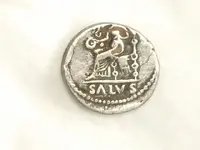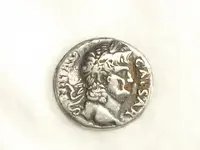jimmy uk said:
thanks for that.. i guess im just gona have to do some more digging about this coin as.. i have half of people saying its a real fake and the other half saying its not so im 50-50 who to beleave

If it were mine, we (Dad & I) would label the coin slip 'Contemporary Forgery', but as I was trying to explain we use this term as the depth of our knowledge in these is limited to a few examples & we have found no-one with a convincing argument that they are something a little different, like the semi-official or local imitation options.
I'm
99% happy it's Ancient, so for the time being & until you 'luck' into an expert, just keep it as so. I do use the fake word but its a confusing term when talking about Ancient Coins, try & avoid it unless talking to 'Joe Public'.
You could spent a lot of time tracking down the right answer when splitting the hairs I'm talking about

The important thing is its very, very unlikely it's Modern.
Something to bear in mind when reading an 'Experts' opinion, look carefully at the language; words like unlikely & maybe etc can point towards a lack of depth of Knowledge (I do it all the time, that's why I don't like it when people call me an Expert), I'm a generalist or Specialist in Antiquities & that's pushing it.
When an 'Expert' ID's a coin, they should & mostly do have conviction in their words & they will draw upon their experience of handled examples, giving very detailed replies on all sorts of parameters {
For example the UKDFD does not list the Die Axis, what is yours?*}. They will normally ask questions on weight & size to compare to their research & comment on the variations of similar examples, including provenance.
*Die Axis is important when looking at the possibilities of local imitation or Official Mint. You measure this by the hands of the clock, ie 12'oc, 6'oc etc... Take the coin with the Obv (Head side) facing exactly upright & hold it lightly between your thumb & finger. Swivel it around so you can see the reverse but keep the coin upright & don't change angle. When you see the reverse, which way up is it (use the clock to measure).
 its been ID as a Nero Fourrée Denarius DATED AD66!
its been ID as a Nero Fourrée Denarius DATED AD66!
 its been ID as a Nero Fourrée Denarius DATED AD66!
its been ID as a Nero Fourrée Denarius DATED AD66!







 The important thing is its very, very unlikely it's Modern.
The important thing is its very, very unlikely it's Modern.







 )
)  ...... but I found a good scare.
...... but I found a good scare. 